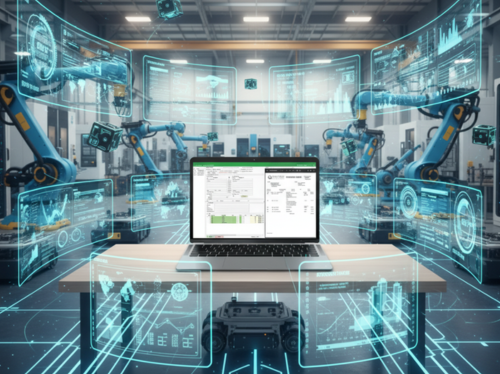ETG Provides Flexible Automation For Mollart Cox

As a leading precision component manufacturer to the oil & gas, nuclear, defence, hydraulic, off-highway, automotive and aerospace industries, Mollart Cox has just invested in its first robotic machining cell to enhance its flexibility and productivity. Turning to the Engineering Technology Group (ETG) and its Nakamura-Tome range of turning centres, the flexibility of the Derbyshire manufacturer has flourished since installing the automated cell.
Referring to why the Chesterfield manufacturer invested in the cell from ETG, Christopher Cox from Mollart Cox says: “We needed an automated cell like this because we have a lot of various setups, and our parts are very different. Many of the parts are similar in shape but different to produce. So, the set-up was key to us, as was the ability to use a machine with or without the robot. Another factor was the speed of setup.”
“We selected the Nakamura-Tome WT-150II because of the build quality. We know about the quality of the machine, even though we haven’t previously purchased one. Additionally, ETG has a very good backup and support service. The speed and the quietness are impressive, and our tooling packages work very well with the machine too.”
Steve Brown from ETG says: “We have a fully operational automated cell that incorporates the Nakamura WT-150II turning centre and the Robojob turn assist. So, what we’re doing here is loading billets and unloading finished parts. The Robojob stores the raw material, and it has a pallet system where the finished parts are collected. The beauty of the cell is that it is a completely flexible unit. The Robojob gives you the flexibility to produce anything from a very small component up to a larger billet and the Nakamura machine is a full production lights-out machining cell. This enables anybody with a nucleus or a range of parts to move into full production. The Nakamura WT-150II is a twin-spindle twin turret machine with a Y-axis on the upper turret and a 65mm through bore capacity. This makes it suitable for everything from simple to particularly complex parts.”
As a company that already has gantry loaded turning centres, Chris says: “We went for this set up because gantry system machines take a long time to re-set in between jobs. The more customers we get with a variance of jobs, we need to be able to set the robot quickly with regards to different size diameters and different types of tools. The Robojob with the Nakamura fulfilled our need for ease of use with setups and flexibility.”
“The Nakamura is producing very high-quality parts in high numbers. It is repeating the precision really well, and repeatability has been one of the key reasons for the installation. We can machine various materials from aluminium through to steel and it produces the parts very quickly and very consistent as well,” continues Chris.
“The software on the machine is intuitive and easy to use. The machine has a similar backend to other machines, but it has the front end of a Nakamura. So, they have their own control system on there and it helps with its ease of programming. From the start, ETG has helped us to create the programmes and sort the robot out, so everything has been linked in one actual set-up. One of the main reasons we wanted to work with ETG was because the robot came supplied with the machine as a full package. In fact, the first parts we produced were passed off at ETGs headquarters.”
Steve Brown continues: “The issue that Mollart Cox had before ETG got involved was swarf. The Nakamura WT-150II has software on it that enables us to chip break, to break up the swarf, so it is not stringy material. This stops the swarf from getting caught up around the chuck and the component. This helps with lights out running, as we cannot have swarf impacting the work area as we have to have the robot entering the work area and handling the components.”
“I would recommend ETG to anyone that really needs help in obtaining a new machine to produce their current parts with much faster processes. They held our hand right from the beginning, from when we placed the order through to component programming and getting the robot on-site and set up. We had a few teething issues, but we worked together with ETG, and they sorted it out very quickly – and to be honest, we are really happy with how the machine is performing,” concludes Chris.








